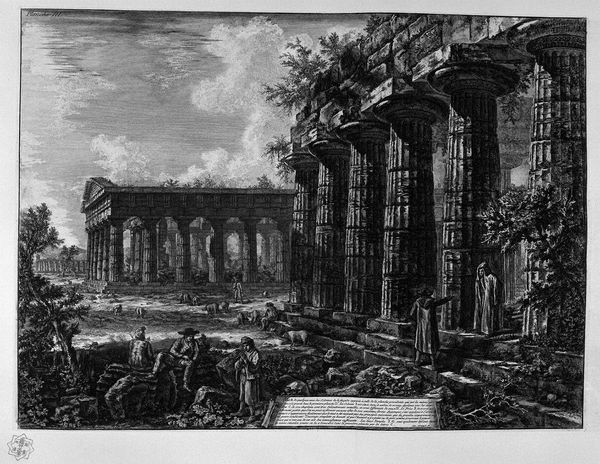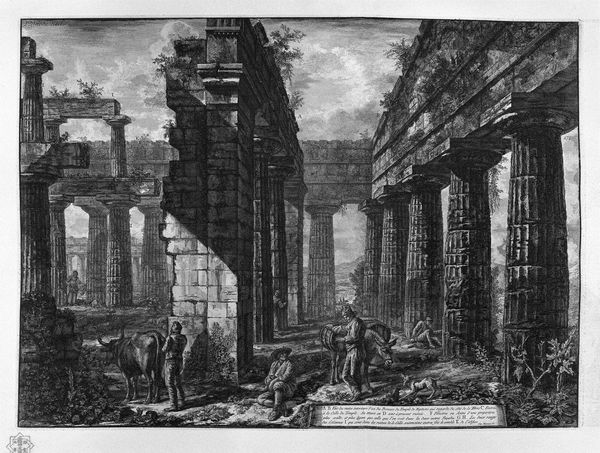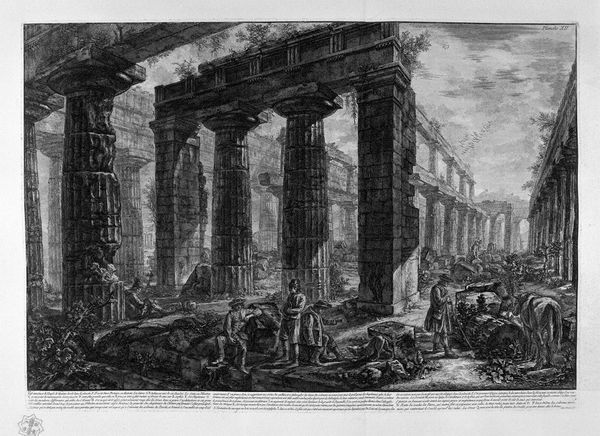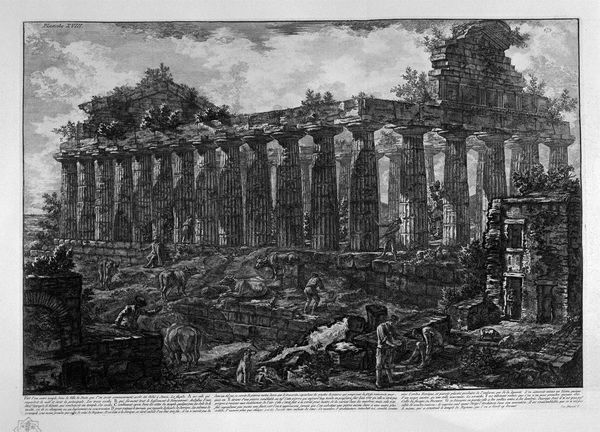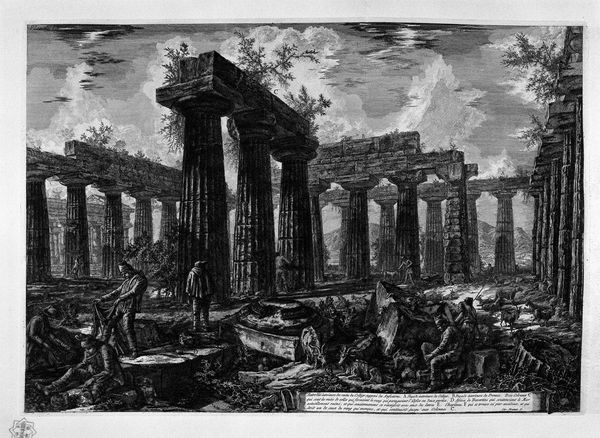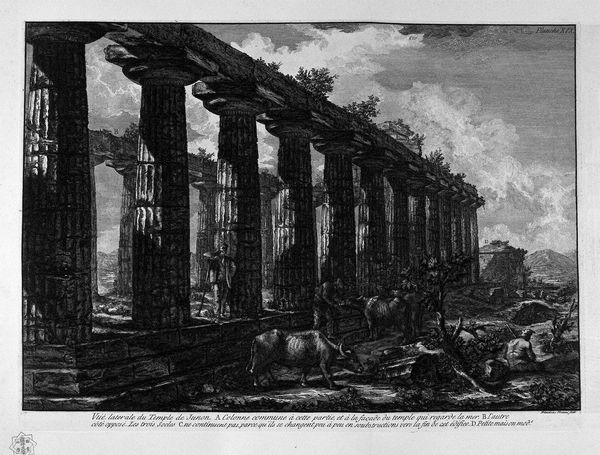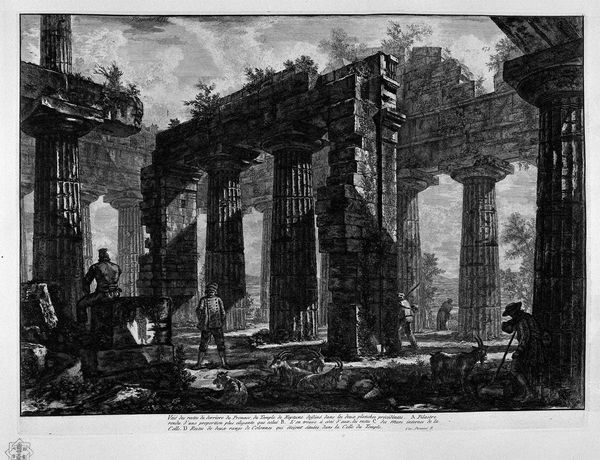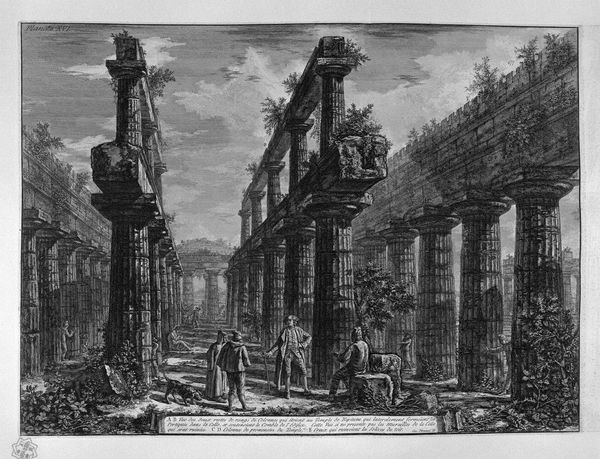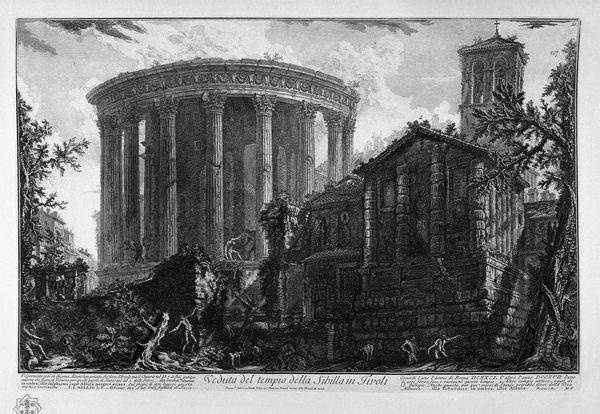
print, etching, engraving, architecture
#
baroque
# print
#
etching
#
sculpture
#
landscape
#
black and white format
#
form
#
romanesque
#
column
#
black and white
#
line
#
cityscape
#
engraving
#
architecture
#
realism
Copyright: Public domain
Curator: Let’s take a look at Giovanni Battista Piranesi's print, “Inside the same building." Editor: Whoa, that’s intense. Like stepping into a dream—or maybe a beautifully rendered nightmare? It’s all black and white, giving it this haunting quality. So many columns, so much…grandeur, turned to ruin. Curator: Piranesi, of course, known for his detailed etchings, presents a layered meditation on time, architecture, and the weight of history through printed images. The ruins depict an imagined Rome, filtered through observation, archaeology, and imagination. Notice the figures he has inserted - those people with the animals, giving scale to the space, while the use of light highlights the surface and texture of the decaying material. Editor: They look like tiny ghosts wandering amidst giants! For me, those dark masses and dramatic shadows, achieved through his printmaking process, create this feeling of…overwhelmingness. Are we supposed to feel small, dwarfed by these remnants? Or maybe pity for them? Curator: Piranesi was very interested in the process of etching and engraving, the line work giving you texture to describe the crumbling materials of these huge temples, using his skill to explore classical form through a romanesque lens. It definitely makes one think about power and its impermanence, how even the most ambitious building project is still bound by the materials that compose them. Editor: True, the materials will return to earth. I see the artist using the landscape format, emphasizing that time and landscape both act on form. These columns appear both strong and delicate at the same time, somehow. Curator: His cityscapes definitely capture a mood—a palpable tension between the past's ambition and the present's decay. Editor: A very thoughtful comment; Piranesi creates what I think is a melancholic echo of architectural achievement. Curator: Precisely. The conversation we've had underlines the piece’s rich engagement with history and its making. Editor: I can agree with that: his technique, especially within the realm of printed image, allows a reflection on both memory and material decay. It gets the viewer wondering about humanity.
Comments
No comments
Be the first to comment and join the conversation on the ultimate creative platform.

